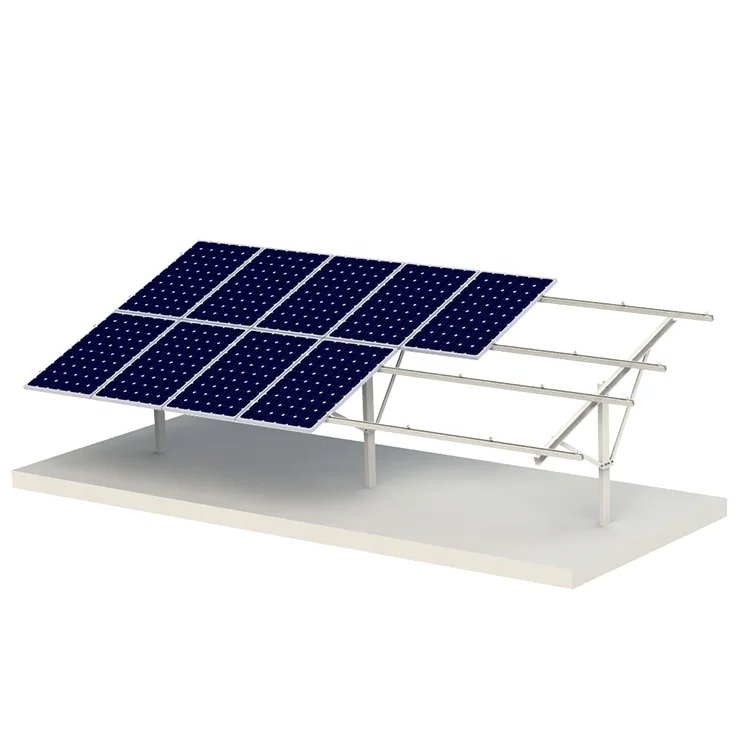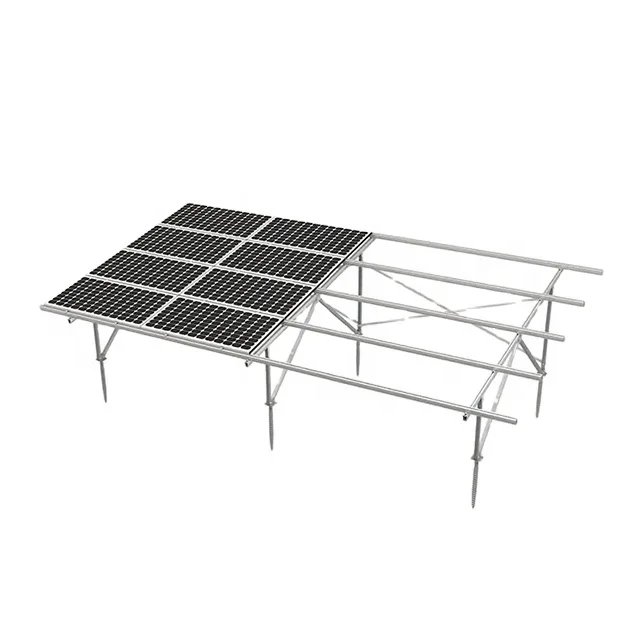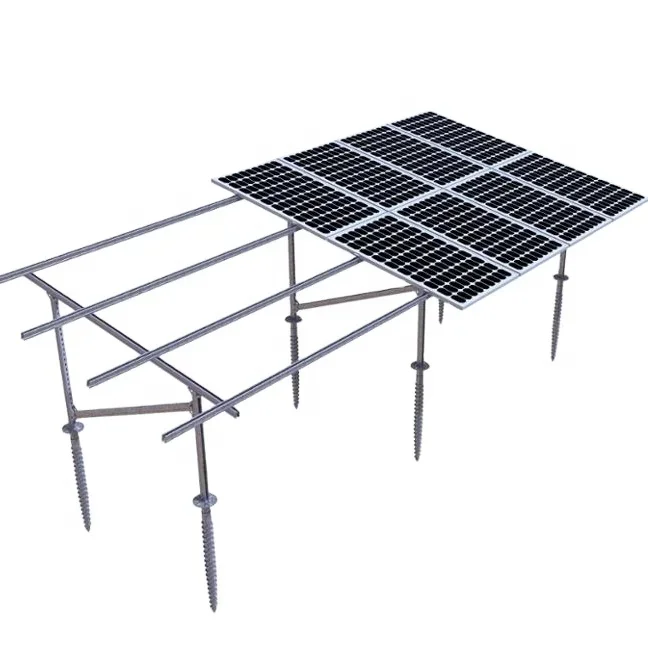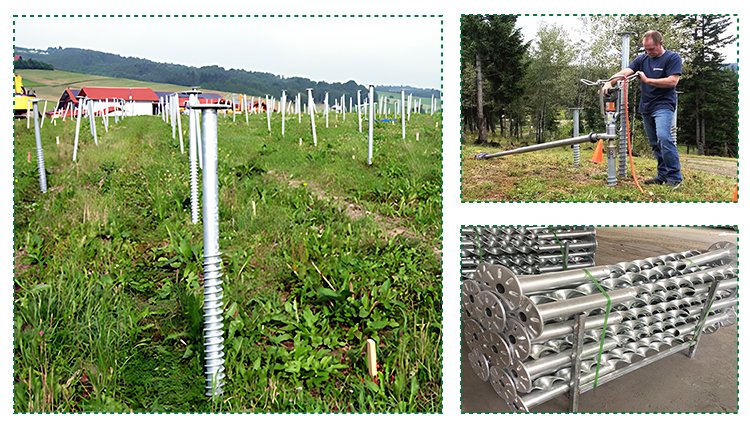-
2103 Room NO.322 Xinggang One Road,Haicang District,Xiamen Fujian,Kina

Industrial Solar Mounting Systems: Materials, Installation Methods & Key Considerations
Table of Contents
Solar panels alone cannot generate power efficiently. A crucial but often overlooked component is the solcellsmonteringssystem—the support structure that holds the panels securely in place. Choosing the right type of mounting system for industrial applications directly affects power output, installation cost, durability, and long-term ROI.
What Is a Solar Mounting System?
A solar mounting system is the base structure used to install solar panels. While residential systems involve smaller installations, industrial solar power systems require high-strength, scalable mounting structures to support large arrays over extended periods. The right choice maximizes energy generation, withstands harsh environmental conditions, and ensures structural safety for over 20 years.
Common Installation Methods for Industrial Solar Systems
Ground-Mounted Systems
Also called “open-field mounting,” these systems are installed directly into the ground and are ideal for unused land or slopes.
- Key benefit: Customizable tilt angles to optimize solar gain.
- Popular choice: Solcellsmonteringssystem för mark
📷
Metal Roof Mounting Systems
Used in factories or warehouses with corrugated or trapezoidal metal roofs.
- Flat mounting: Lower cost
- Tilted mounting: Better solar efficiency
Explore our Metal Roof Mounting Systems
📷
Floating Solar Mounting Systems
Deployed on water bodies like ponds or reservoirs using floating platforms.
- Higher output due to water cooling effect (~10% more)
- Efficient land use
- Suppresses algae growth
Explore: Flytande solcellsmonteringssystem
📷
Types of Mounting Materials
The mounting structure must resist corrosion, bear environmental loads, and support maintenance activities. Here are the top 3 materials:
Stainless Steel
- Pros: Excellent corrosion resistance; ideal for coastal areas
- Cons: Heavy and expensive; hard to process on-site
Galvanized Steel (Carbon Steel with Zn Coating)
- Pros: Affordable and strong
- Cons: Requires anti-corrosion coating (e.g., ZAM or HDG); not suited for all environments
Check: Hot Dip Galvanized Steel Base Support
Aluminum Alloy
- Pros: Lightweight, corrosion-resistant, recyclable
- Cons: Lower strength (can be compensated by design)
📷
Foundation Types for Industrial Mounting
Den foundation anchors the structure and determines long-term stability.
Concrete Foundations
- Types: Precast blocks, strip foundations, raft foundations
- Applications: High-wind or unstable soil regions
More info: Concrete Block Foundation System
Pile Foundations
- Variants: Screw piles, driven C-steel, single poles
- Pros: Minimal ground disturbance; fast install
- Cons: Unsuitable for loose or weak soils
Check:
C – Steel with Screw Pile
Single Pole Mounting
📷
Ideal Height of Solar Mounting Systems
- Standard range: 60–100 cm (minimum 50 cm)
- Too low (<30 cm): May void warranties or insurance
- Too high: Increases wind exposure and cost
Benefits of Elevated Mounting Systems
- Avoids shading from weeds or nearby objects
- Reduces dust and mud splashes
- Easier inspection and cleaning
- Keeps panel temperature lower, reducing thermal loss
- Allows snow to slide off easily in colder regions
Important Considerations When Raising Mount Height
Higher Costs
- Requires more materials, stronger components
- May need bracing and wind-resistant design
Wind Load Risks
- Taller structures are more exposed to uplift forces
- Site-specific wind analysis is crucial
Cost Breakdown of Industrial Solar Installation (2022 Example)
| Component | Cost per kW (JPY) | 10kW System |
|---|---|---|
| Solar Panels | ¥102,000 | ¥1,020,000 |
| Power Conditioner | ¥30,000 | ¥300,000 |
| Mounting Structure | ¥33,000 | ¥330,000 |
| Installation Work | ¥74,000 | ¥740,000 |
| Other Costs & Taxes | ¥16,000 | ¥160,000 |
| Total | ¥257,000/kW | ¥2,570,000 |
(Source: METI, 2022)
Optimizing Panel Tilt Angle
General Rule
- Average tilt: 30°
- South-facing is optimal in Japan
Regional Differences
- Hokkaido: Higher tilt for snow clearance
- Okinawa: Lower tilt to capture midday sunlight
Use NEDO’s database for precise angle simulation.
Adjusted Layouts for Limited Land
In commercial installations, east-west zigzag setups (M-shape) may be used to increase panel density—even at the cost of 10–15% efficiency. Reflected light between panels helps recover part of the loss.
Summary: Maximize Output with the Right Mounting Choices
Industrial solar projects must:
- Choose materials suited to local climate
- Use strong, low-maintenance foundations
- Set panels at optimal tilt angles och elevations
Being informed helps avoid poor installations and maximize returns. Consult professionals and choose trusted suppliers like Firstsolar.
Need Help Choosing a Mounting System?
At Firstsolar, we provide a wide range of high-quality, cost-effective solar racking solutions tailored for industrial needs. Whether you’re looking for aluminum, carbon steel, or floating systems, we’ve got you covered.
📷
Let us help you build durable and efficient solar power infrastructure.








